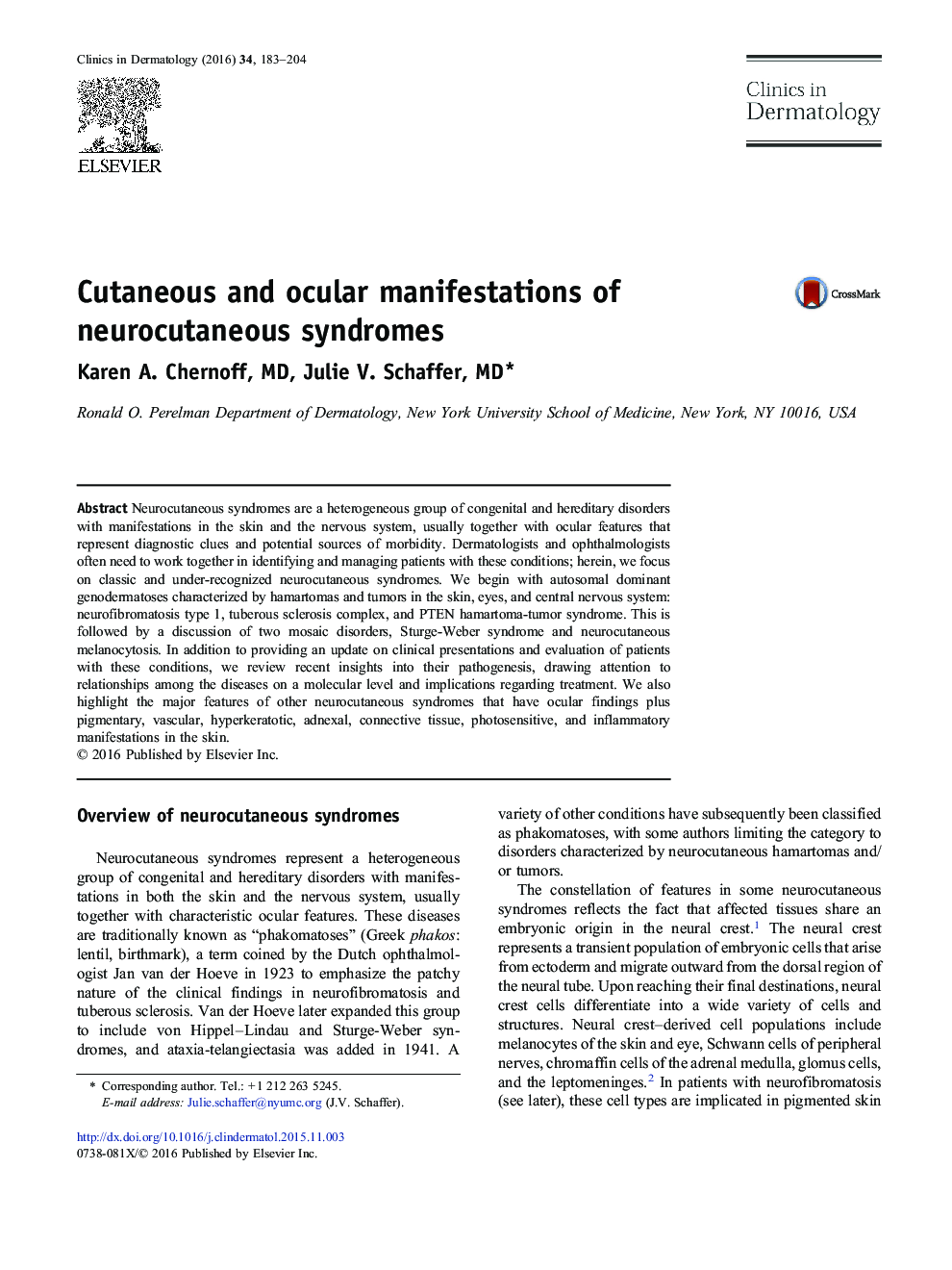| Article ID | Journal | Published Year | Pages | File Type |
|---|---|---|---|---|
| 3193999 | Clinics in Dermatology | 2016 | 22 Pages |
Neurocutaneous syndromes are a heterogeneous group of congenital and hereditary disorders with manifestations in the skin and the nervous system, usually together with ocular features that represent diagnostic clues and potential sources of morbidity. Dermatologists and ophthalmologists often need to work together in identifying and managing patients with these conditions; herein, we focus on classic and under-recognized neurocutaneous syndromes. We begin with autosomal dominant genodermatoses characterized by hamartomas and tumors in the skin, eyes, and central nervous system: neurofibromatosis type 1, tuberous sclerosis complex, and PTEN hamartoma-tumor syndrome. This is followed by a discussion of two mosaic disorders, Sturge-Weber syndrome and neurocutaneous melanocytosis. In addition to providing an update on clinical presentations and evaluation of patients with these conditions, we review recent insights into their pathogenesis, drawing attention to relationships among the diseases on a molecular level and implications regarding treatment. We also highlight the major features of other neurocutaneous syndromes that have ocular findings plus pigmentary, vascular, hyperkeratotic, adnexal, connective tissue, photosensitive, and inflammatory manifestations in the skin.
